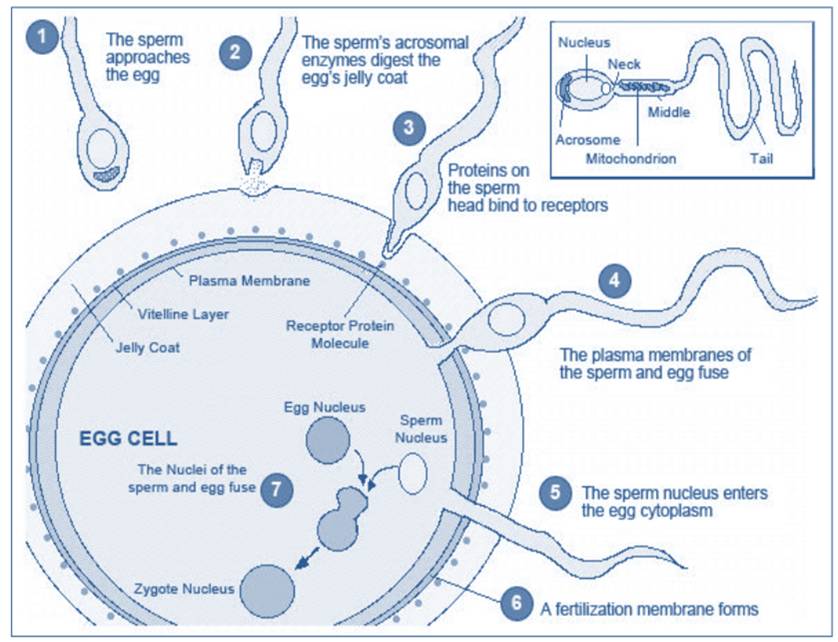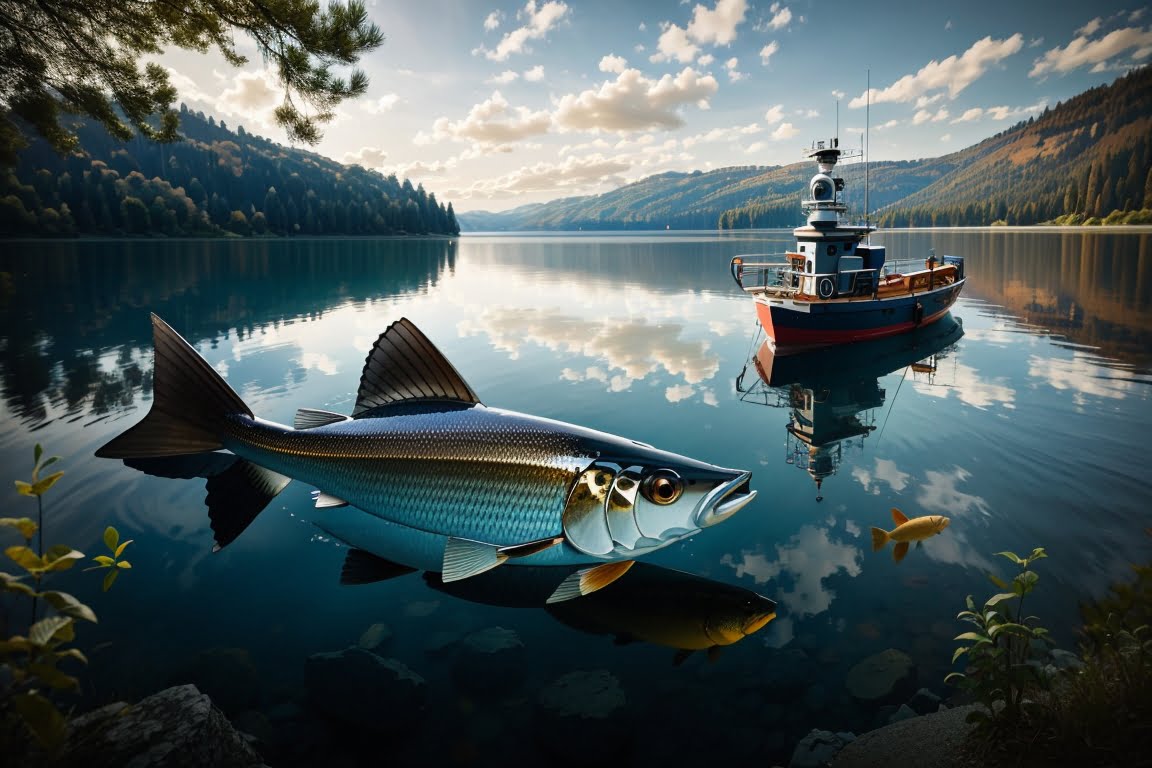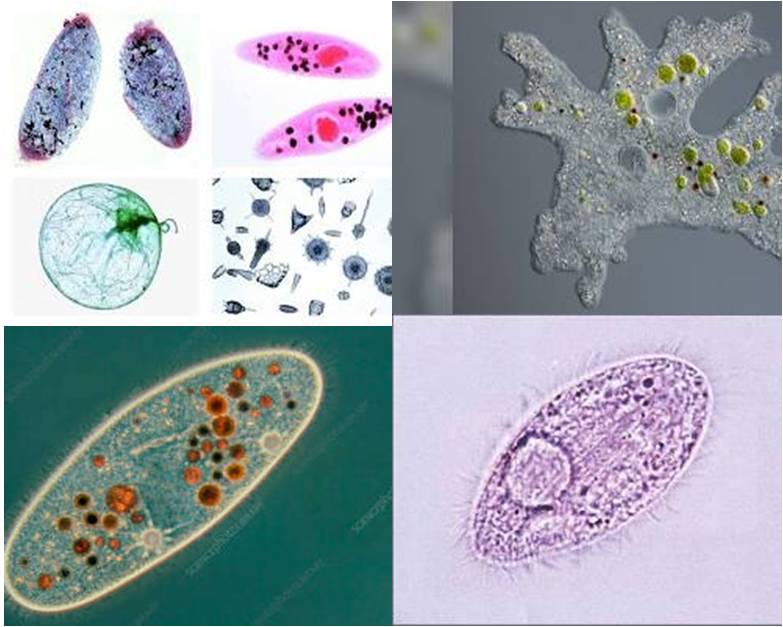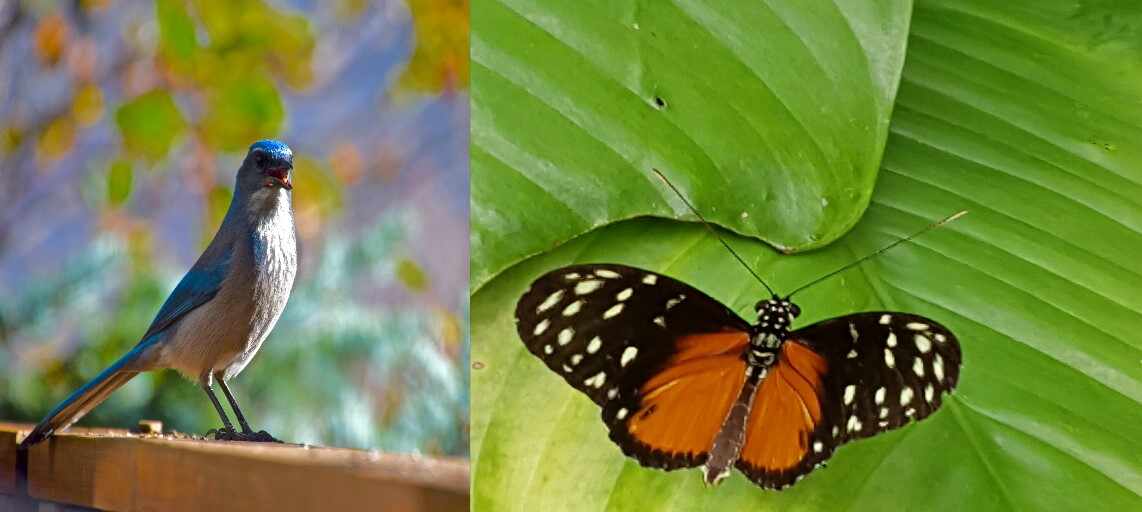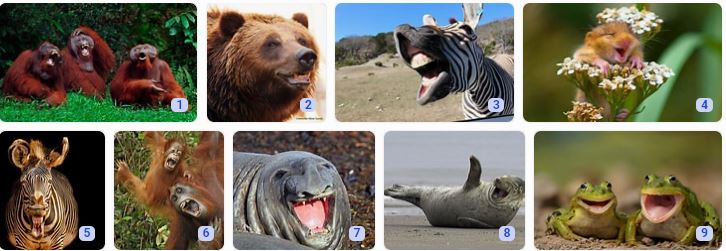Protochordata: The organisms belonging to the Protochordata or acraniates are generally known as the lower chordates. They don’t form a “proper” taxonomic group and are only classified as such for convenience purposes. However, they do form a major group of Chordata. They are also known as Acraniata because they lack a true skull.
Characteristics of Protochordata or Acraniates
1. They are generally found in marine water.
2. Their body is bilaterally symmetrical, triploblastic, and coelomated.
3. At a certain stage of their lives, their body develops a long, rod-like structure for support called the notochord.
4. They exhibit organ system level of organization.
E.g., Herdmania, Amphioxus.
CLASSIFICATION OF PROTOCHORDATA OR ACRANIATES
They are divided into two subphyla- Urochordata, Cephalochordata.
Sub-Phylum 1. Urochordata
- They are exclusively marine.
- This sub-phylum is also called Tunicata because the adult body is enclosed within a leathery test or tunic formed of a cellulose-like organic substance termed tunicin. Excretion by neural gland, hence excretion is glandular. ‘Protochordata’
- The larva (Ascidian tadpole) undergoes retrogressive metamorphosis, i.e., change from better developed larva to less developed adult, e.g., Herdmania (Sea Squirt).
- Blood vascular system is open type heart is situated at ventral surface of body. Respiratory pigment is Vanadium in blood which is stored in purple blood corpuscles known as Vanadocytes. Vanadocytes are present except in Herdmania. Examples: Salpa, Doliolum, Ascidia.
- Metameric segmentation is absent and coelom is also absent.
- Method of food intake is ciliary.
- Notochord is found only in tail of tadpole larva. Tail is lost during metamorphosis.
- Chordate characters are found only in the tail region of tadpole larva, so the name Urochordata was given to this subphylum.
- Dorsal tubular nerve cord is found in nervous system, which is present only in larval stage. In adult stage, nerve cord is modified into a neural ganglion.
- Most of the animals are bisexual. Asexual reproduction is normaly by budding.
- Each gonad contains testis and ovary portion (Ovo-testes) in it. Fertilisation is external and mostly cross-fertilisation.
Larval characters of Urochordates:
- Elongated larva of Urochordata is known as ascidian tadpole larva. Adult emerges from the larva by the process of metamorphosis.
- Notochord restricted at the caudal end, hence name Urochordata.
- Dorsal hollow nerve chord spreads end to end.
- Pharyngeal gill slits are present.
- Highly active post anal tail is prominent.
Adult characters of Urochordata:
- The body of the adult is covered by a tunic (hence named Tunicata). The tunic is composed of a protein tunicin and a polysaccharide similar to plant cellulose.
- Adults are sessile and attached to the substratum of the sea.
- Incurrent branchial siphon, and ex-current atrial siphon, form entrance and exit portals for the water that circulates through the body.
- Branchial siphon opens into a branchial basket, i.e. pharynx.
- Tiny finger-like sensory tentacles encircle the incurrent siphon to examine the incoming water and prevent large particles from entering.
- These are hermaphrodite animals; reproduce both sexually and asexually.
Classification of Urochordata: This subphylum is divided into three classes — Ascidiacea, Thaliacea and Larvacea. The characters and examples of these classes are given here:
A. Class — Ascidiacea:
General characters:
- Comprises mostly brightly coloured marine animals.
- Some species are solitary, others are colonial.
- Adults are sessile, but larvae are plank tonic and do not feed.
- Adults having sac-like body, covered by tunic.
- Most of the chordate characters that were present during larval period disappear during metamorphosis into adult. ‘Protochordata’
- In adult, nervous system transforms into a nerve ganglion.
Examples: Ascidia, Ciona, Herdmania.

Fig. Ascidia Fig. Ciona Fig. Herdmania
B. Class — Thaliacea:
General Characters:
- These are free-living pelagic urochordates.
- The tunic is transparent and thin.
- They possess encircling circumferential bands of muscles within the walls of the test.
- Incurrent and ex-current siphons are present at opposite end of the body.
- A few pharyngeal gill slits are present.
- In the life-cycle polymorphism and clear alternation of generations are evident.
Examples: Salpa, Doliolum.
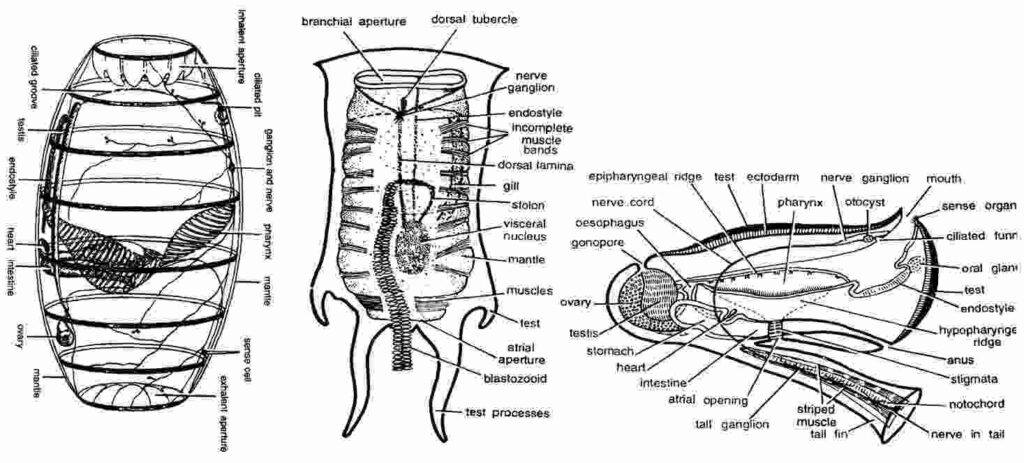
Fig. Doliolum Fig. Salpa Fig. Oikopleura
C. Class — Larvacea/Appendicularia:
General characters:
- These are tiny marine planktonic urochordates found worldwide.
- Larvacea received their name because the adults retain larval characteristics similar in some way to the ascidian tadpole with its tail and trunk. The general resemblance of adult larvaceans to ascidian tadpoles suggests that larvaceans may be neotenous form.
- They produce a remarkable feeding apparatus (house) that consists of three components: screens, filters and expanded gelatinous matrix. Disturbed or actively feeding larvaceans abandon their old house and builds a new one. ‘Protochordata’
- The trunk holds major body organs.
- The tail is thin and flat.
- Muscle bands act on notochord to produce movement.
- A tubular nerve cord is present.
- All species, except one, are monoecious, and most of these are protandrous.
Examples: Oikopleura, Appendicularia.
Sub-phylum 2. Cephalochordata
- The notochord extends upto anterior end of the body, hence this sub-phylum is named so.
- The tail is present throughout life, e.g., Branchiostoma (Amphioxus). Amphioxus /Branchiostoma has both ends pointed like lance. Hence it is commonly called lancelet.
- Head is absent body is divided into trunk and tail.
- Alimentary canal complete. Buccal opening is covered by oral hood from all the four sides. Just beneath it, “Wheel organ” or “Ciliated organ of Muller” present.
- This organ helps in the ingestion of food by producing circular currents in water.
- Blood vascular system is closed type and respiratory pigment absent.
- Hepatic portal system present.
- For excretion protonephredia are present in the form of flame cells or solenocytes. Hatschecks nephridium (single) is present which helps in excretion.
- Nervous system is in the form of dorsal, tubular ; hollow nerve cord.
- Notochord and nerve cord remain extended from one end of the body to the other end.
- These are unisexual animals.
- Fertilisation is external.
- Development is indirect i.e. larval stage is found.
- Members of this group are the first complete chordate animals.

Fig. Amphioxus
The subphylum Cephalochordata comprises a single class lepitocardii with two genera
A. Branchiostoma (Approx. 16 species)
• Gonads lie on each side of the body.
• They inhabit the tropical and subtropical seas
B. lanceolatum Asymmetron (Approx. 7 species) • Gonads lie only on the right side
Read more: Hemichordata

